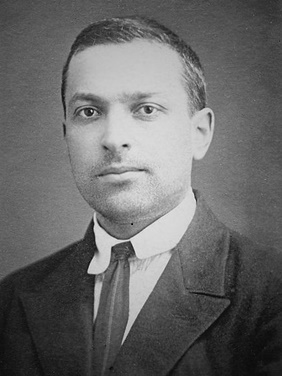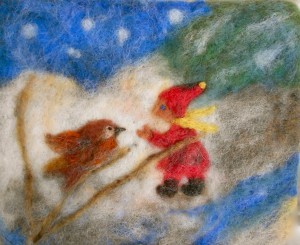1. The Center for School Climate and Learning
“Founded in 2010, the Center for School Climate and Learning‘s mission is to help schools achieve greater academic success by promoting positive school climate and respectful, engaging teaching… The Center provides comprehensive and effective school climate research, assessment tools and services and exciting professional development opportunities for teachers, student leaders, and school administrators as we continue to work in schools in New Hampshire, where we are based, as well as across the country…Our programs and services are designed to help educators develop and implement data-driven action plans to improve school climate, prevent bullying and school violence, reduce dropouts, and re-engage disengaged learners.”
http://thecscldotcom.wix.com/thecscl
2. The Cooperative Learning Institute
“The Cooperative Learning Institute is an innovative nonprofit Institute established in 1987 to advance the understanding and practice of cooperation and constructive conflict resolution. We have two missions. The first is to advance the theory and research on social interdependence (i.e., cooperative, competitive, individualistic efforts) and constructive conflict among individuals, groups, organizations, communities, cultures, and countries. The second is to educate individuals in the nature of cooperation and constructive conflict resolution through the use of cooperative learning (formal cooperative learning, informal cooperative learning, and cooperative base groups),cooperative schools (cooperative teaching teams, school-based decision-making, cooperative faculty meeting), constructive controversy (academic controversy to increase quality of learning and decision controversy to increase quality of decision making), and peacemaking (problem-solving negotiations, peer mediation, violence prevention). Our dual missions closely links theory and research with practice. We are committed to conducting basic and applied research on social interdependence and constructive conflict resolution. We are committed to developing, evaluating, and implementing state-of-the-art methods for cooperating, competing appropriately, engaging in constructive controversy, and using integrative negotiations and peer mediation to resolute conflicts constructively. We emphasize making our conceptual and practical models and methods easily accessible to interested parties throughout the world. The Institute is organized into two divisions.
The organization’s newsletter “The Cooperative Link” contains interesting and informative articles on cooperative learning. An example is “Making Group Discussions Work” http://www.co-operation.org/wp-content/uploads/2013/07/Volume-271.pdf)
3. Theorist Lev Vygotsky
“At the core of Vygotsky’s theory (also known as Cultural-Historical theory) is the idea that child development is the result of interactions between children and their social environment. These interactions involve people—parents and teachers, playmates and schoolmates, brothers and sisters. They also involve cultural artifacts, such as books or toys, as well as culturally specific practices in which a child engages in the classroom, at home, or on the playground. Children are active partners in all of these interactions, constructing knowledge, skills, and attitudes, not just mirroring the world around them. Essentially, the history and the culture of the society in which a child grows up and the events making up a child’s personal history determine much more than what that child knows or likes—it also determines which mental tools the child will learn and how these tools will shape the child’s mind.”
“For Vygotsky, the most effective learning happens when the new skills and concepts being taught are just on the edge of emergence—in the Zone of Proximal Development. When this happens, the child does not simply acquire new knowledge but actually makes progress in his or her development—in Vygotsky’s words, “learning leads development.” Vygotsky recognized that the assistance or scaffolding needed to bring about new skills and concepts within a child’s ZPD may take different forms for children of different ages. For instance, mature make-believe play supports the development of pre-school children similar to the way formal instruction supports the development of older students. According to Vygotsky, “A child’s greatest achievements are possible in play, achievements that tomorrow will become her basic level of real action.” The features of play that support development includes imaginary situations, the roles children act out, and the rules children follow while acting out their pretend scenarios.”
http://www.toolsofthemind.org/philosophy/vygotskian-approach/
4. Therapeutic storytelling with handmade puppets made from wool
Juniper Tree Puppets:
“Juniper Tree Puppets has been a long time center for puppetry and storytelling arts. We are interested in the art and archetype, the magic and meaning, the wisdom and healing of story and ensouled puppetry.”
http://www,junipertreepuppets.com
5. Vivian Gussin Paley – the guru of play and storytelling!
“Vivian Gussin Paley’s ‘storytelling curriculum’ consists of two interdependent activities, dictation and dramatization. It has long been recognized for its impact on young children’s psychosocial, language, and narrative development. As a result of the Bush administration’s educational polices, holistic, play-based curricula like storytelling are rapidly being replaced in early childhood classrooms across America by curricula aimed at specific sub-skills of the reading and writing process. This article provides a structural analysis of what happens when children dictate and dramatize original stories in the pre-kindergarten and kindergarten classroom. It highlights the opportunities for literacy learning around specific literacy sub-skills that are available in this holistic, play-based activity as well as the teacher’s role in the process. It also looks at the storytelling curriculum’s relationship to the goals of a ‘balanced’ approach to early literacy instruction, including oral language development, narrative form, and word study.
“Literacy learning and pedagogical purpose in Vivian Paley’s ‘storytelling curriculum’ by Patricia M. Cooper, Journal of Early Childhood Literacy, December 2005 5: 229–251.
A Conversation with Vivian Gussin Paley. National Association for the Education of Young Children (NAEYC): http://www.naeyc.org/files/naeyc/Paley.pdf
6. National Association for the Education of Young Children

“The National Association for the Education of Young Children (NAEYC) is a professional membership organization that works to promote high-quality early learning for all young children, birth through age 8, by connecting early childhood practice, policy, and research. We advance a diverse, dynamic early childhood profession and support all who care for, educate, and work on behalf of young children.”
“The association comprises nearly 70,000 individual members of the early childhood community and more than 300 regional Affiliate chapters, all committed to delivering on the promise of high-quality early learning. Together, we work to achieve a collective vision: that all young children thrive and learn in a society dedicated to ensuring they reach their full potential.”
http://www.naeyc.org/
Here are some excellent position statements which NAEYC has published: http://www.naeyc.org/resources/position%20Statements
These position statements include subjects such as technology and young children, responding to linguistic and cultural diversity, and developmentally-appropriate practice (DAP).
7. Preschoolers Grow Their Brains – Shifting Mindsets for Greater Resiliency and Better Problem Solving
This is an excellent article from the National Association for the Education of Young Children (NAEYC) which gives rationales and strategies for supporting a growth mindset, as well as a problem-solving routine for young children.
Preschoolers Grow Their Brains – Shifting Mindsets for Greater Resiliency and Better Problem Solving
8. Teaching the Standards is Developmentally Appropriate Practice: Strategies for Incorporating the Sociopolitical Dimension of DAP in Early Childhood Teaching
This article includes a section on Sociocultural and Sociopolitical Influences on Young Children’s Lives and Learning
9. Think:Kids





